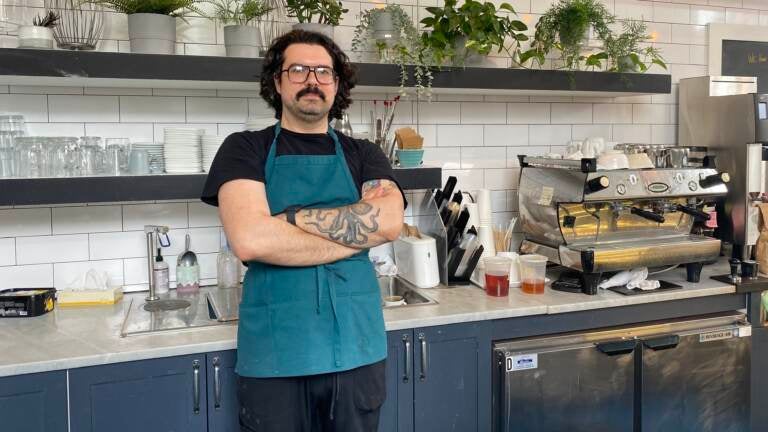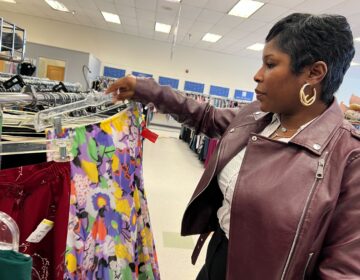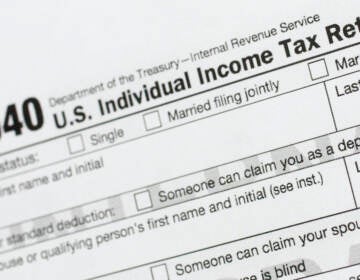Got tipping rage? This barista reveals what it’s like to be behind the tip screen

There’s nothing Dylan Schenker loves more than a well-made espresso.
“Nothing beats a good espresso shot,” he says. “It has kind of like a creamy, full-mouth feel. It’s a little salty, just slightly sour, slightly bitter.”
A barista since 2010, Schenker, 39, takes his craft seriously. He even brings some of his own tools to work, like a special portafilter (which lets him see the coffee as it’s brewing), so he can make sure it has the right color and consistency.
Between brewing the perfect espresso, talking with regulars and meeting new customers, Schenker loves a lot of things about his job at a cafe in Philadelphia.
One thing he does not love? The tipping situation.
“I know — tipping with baristas is weird,” Schenker says. “It’s become really contentious for a lot of customers.”
But, Schenker says, having to stand behind the payment tablet while customers decide whether to tip — and by how much — is not a fun moment for him either.
“There’s this awkwardness,” he says. “It’s kind of verboten to say anything about tipping in front of the tip screen. You’re not supposed to talk about tipping.”
And every once in a while, things get really weird.
“I remember this one guy looks up at me — he’d been going through the screens — and he’s like, ‘Oh! I accidentally tipped!'” Schenker laughs. “And I’m like, ‘How do you expect me to respond to this? … Better luck next time?'”
Tipping wasn’t always this way
When Schenker started out in 2010, tipping was in cash, and it wasn’t much: He took home roughly $10 a day.
But tipping gradually became a bigger and bigger part of Schenker’s pay, especially during the COVID-19 pandemic, and today he depends on those tips to make a livable wage.
That’s something Schenker says a lot of people don’t understand when they complain about tipping.
“I’ve never made more than $25,000 a year,” says Schenker. “I cannot even wrap my head around the idea of making $30,000 or $40,000 a year. I could do so much with just that much money.”
Schenker points out that people tend to think of service jobs like his as temporary jobs or jobs for really young people starting out.
“That’s just not true,” he says. Schenker has worked in the service sector for more than a decade and says his experience and expertise should be worth something.
Right now, tips make up 10% to 20% of Schenker’s pay — a 10%-to-20% that varies wildly from week to week and relies entirely on the whims and moods of customers.
“Some weeks everybody tips,” he says. “Other weeks, nobody does.”
Tips are not a bonus for good service
Sylvia Allegretto, a senior economist at the Center for Economic and Policy Research, feels Schenker’s frustration.
“I became an economist because I was a low-wage worker for a long, long time,” she says.
Much of that time, Allegretto worked for tips. Now she is the author of a recent study on tipping, poverty and wages.
Allegretto points out that a lot of tipped workers across the U.S. (many in the food service industry) earn a subminimum wage ($2.13 per hour is the federal subminimum) with the idea that tips will get them up to the minimum wage, but that doesn’t always happen.
In fact, poverty rates for tipped workers are more than double those for other workers.
Allegretto says part of the problem is that tipping is presented as a “thank you!” for great service when in reality it’s something else entirely.
“Tips are a wage subsidy to the employer,” she says. “It’s not a tip. It goes to your wage. It is just the amount that the employer doesn’t have to pay you. And people don’t understand that.”
With inflation happening across the economy, businesses have been dealing with rising costs for years. At the same time, there’s a lot of pressure to keep prices low for increasingly price-conscious customers.
Tipping is a way to get more money from customers without charging them more — money that is meant to go to paying workers. And these days, providing customers with a tipping option, when they didn’t have one before, can be a way to attract hard-to-find workers without offering higher wages.
What it’s like to be a low-wage worker
With more and more companies now asking for tips (or bigger tips), customers are increasingly resentful about the awkward tip screen moments and the unexpectedly high final bill.
“My own niece called me about this,” laughs Allegretto. “I told her, ‘If you’re so worked up about it, just tip in cash.'”
Back in Philadelphia, barista Dylan Schenker says he is very familiar with the strong feelings about tipping. “I’ve gotten into arguments about it,” he says. “I posted something about it on Twitter, and people kind of lashed out at me.”
But Schenker says that after his years in the service industry, he has watched tipping evolve into a major part of his pay.
“If there is some means of tipping that’s available to you, that should signal to you that workers there aren’t being paid enough,” says Schenker. “Tipping is sort of an acknowledgment of that fact.”
To Schenker, customers who don’t tip are not understanding that businesses treat tips as a baked-in part of workers’ wages.
“They subsidize lower prices by paying employees less,” he says. “If you aren’t tipping, you are taking advantage of that labor.”
It’s “demoralizing”
Roughly half of Schenker’s customers tip, which is in line with national data.
But a spate of recent studies shows that customers have an increasingly negative view of tipping. And today, tipping is down from last year, with a nearly 10-point drop in the percentage of adults who say they always tip waitstaff.
And in case you were wondering whether the workers can tell if you’ve tipped or not from the tip screen? They can.
Schenker says it stings.
“There’s just something really, really demoralizing about someone seeing that screen, knowing that I’m not rich and kind of just not caring enough to kind of like want to help me make a living.”
Especially when he’s standing there with their perfectly balanced, sour but not too sour, espresso drink.
9(MDAzMzI1ODY3MDEyMzkzOTE3NjIxNDg3MQ001))




